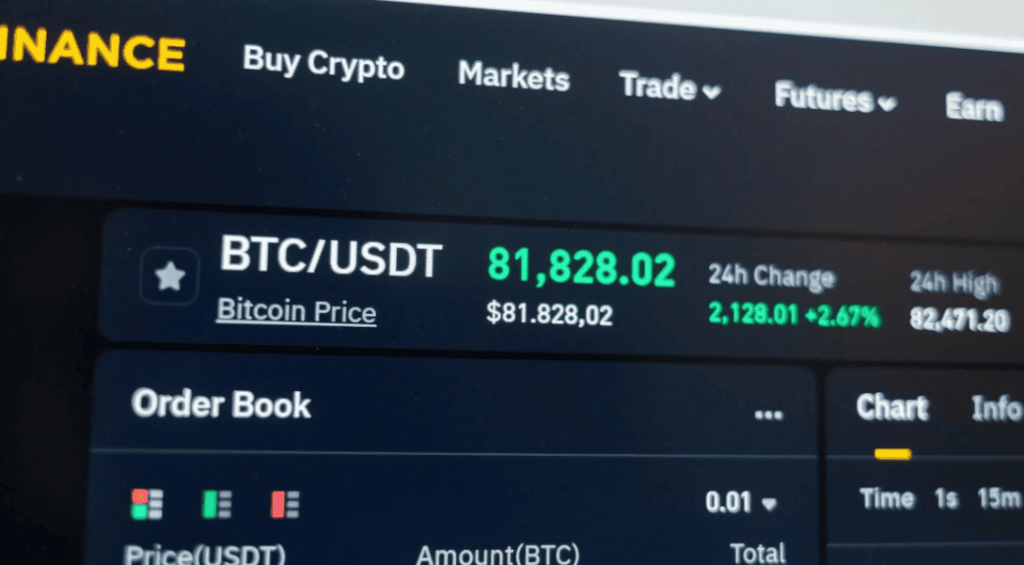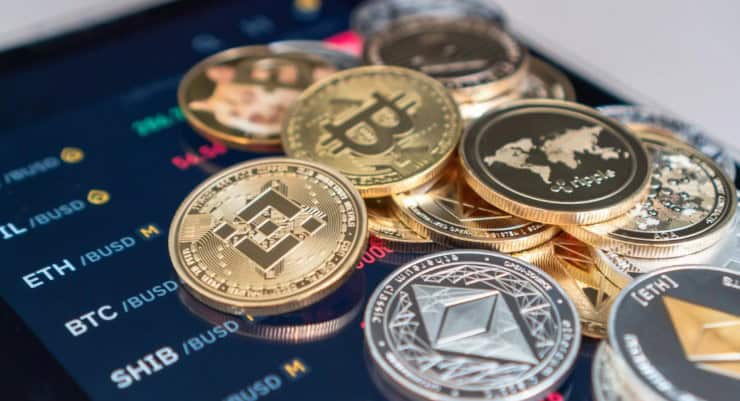The recent surge in the price of Bitcoin has reignited debates about a cryptocurrency bubble, many of them based on intuition. This column takes a formal approach to the beliefs underlying both sides of the debate by introducing a model that builds on the classical framework for rational bubbles. If the price of a cryptocurrency can be justified from transactional demand, it may be a sound investment. However, if future investment inflows are needed to explain the price, that indicates a bubble, with payoffs resembling a Ponzi scheme.
Prominent voices have expressed notably diverse opinions about Bitcoin. Sceptics have labelled it “the mother of all bubbles” (Roubini 2018) and “a Ponzi-scheme” (Welch 2017, Carstens 2018). Enthusiasts have hailed it as “the flagship of a new asset class” (Harvey et al. 2021) and “digital gold” (Popper 2016, Fink 2024). The recent surge in the Bitcoin price to record-breaking levels has ignited the bubble debate about cryptocurrencies once again. 1
Differences with traditional securities
Financial analysts have a hard time discerning which side of the debate is correct. Asset pricing theory establishes a clear conceptual framework to detect bubbles or overpricing for traditional financial securities: compare the current price to the fundamental value, where the latter is defined as the sum of discounted cash flows. However, such an approach is not particularly helpful when analysing a cryptocurrency that does not pay dividends (at least, not in fiat currency).
Another important difference is that cryptocurrencies can be used as a means of payment while financial securities typically cannot – imagine the practical difficulties of sending a remittance by transferring the ownership of a fractional share of your favourite airline. The use of cryptocurrency as a means of payment generates transactional demand. At the same time, cryptocurrencies differ from fiat currencies in that cryptocurrencies typically are not used as a unit of account. The dollar or euro amount on the bill and the cryptocurrency’s latest available exchange rate determine how much cryptocurrency one must transfer in order to pay. All else being equal, one needs to transfer double the amount of cryptocurrency if its exchange rate halves.
Figure 1 Bitcoin price and the share of active bitcoins


Source: coinmetrics.io. Last update: 27 November 2024.
A basic model
Many of the varied opinions about cryptocurrencies are based on intuition and expressed by informal arguments. In a recent paper (Van Oordt 2024), I take a more formal approach to reveal what type of underlying beliefs justify the views on both sides of the bubble debate, introducing a basic model that builds on the classical modelling framework for rational bubbles (Blanchard 1978, Blanchard and Watson 1982). This framework allows for bubble outcomes where an asset appreciates just because of a widely held belief that the price will continue to increase. 2 The new model tailors this framework to analyse cryptocurrencies that face transactional demand but are not used as a unit of account.
A nonzero baseline price
First, I derive the exchange rate of a cryptocurrency in what one could refer to as the baseline equilibrium. This exchange rate reflects the lowest possible equilibrium price, conditional upon current and future transactional demand. The baseline exchange rate can be driven by transactional demand, investor demand, or both.
Investors in the baseline equilibrium may hold coins because they expect to sell them at a profit to future users. Investors choose to do so only if they anticipate sufficiently high growth in transactional demand and sufficiently low growth in the number of coins. The exchange rate in the baseline equilibrium will be driven by the view of investors regarding the future peak level of the discounted transactional demand per coin. 3
Some critics have claimed that bitcoins are worth zero (e.g. Taleb 2021). The baseline equilibrium indicates otherwise. It shows that a zero price cannot be an equilibrium outcome, provided that investors expect some nonzero transactional demand, either now or at some future point. The only belief consistent with a zero price is the belief that the cryptocurrency does not face any transactional demand, nor will it ever face any transactional demand from anyone in the future. For major cryptocurrencies, such a belief is clearly inconsistent with real-world observations. 4
Bubbles
The bottom line of the baseline equilibrium is that financial analysts need to assess whether the future peak level of the discounted transactional demand per coin can explain the current exchange rate. If such an explanation is not possible, one might still argue that a cryptocurrency is a reasonable investment due to the anticipated future inflow of investors’ funds. Such an outcome is indeed possible in the model, and is referred to as a bubble equilibrium.
The exchange rate of a cryptocurrency in a bubble equilibrium can be higher than that which can be explained by the future peak in transactional demand due to additional demand from investors. Investors in a bubble equilibrium choose to hold the cryptocurrency, not with the purpose of selling it to future users, but because they expect it to appreciate as a consequence of a widely held belief among investors that the price will continue to increase.
Share of coins held by investors
A critical difference between the baseline equilibrium and a bubble equilibrium is the evolution in the share of coins held by investors. In the baseline equilibrium, the share of coins held by investors tends to decrease over time. Investors sell their coins to users as the transactional demand approaches the peak in the (discounted) transactional demand per coin. The share of coins held by investors converges to zero once the cryptocurrency reaches that peak.
By contrast, in a bubble equilibrium, the share of coins held by investors tends to increase over time as the bubble persists. If investors trade a cryptocurrency at increasingly high prices, then users will need fewer and fewer coins of that cryptocurrency to facilitate the same dollar amount of payments. Sooner or later, users optimally adjust their coin balances to the lower amounts they need given the increasingly high exchange rate. This adjustment implies a shift in the ownership of coins from users to investors. This shift continues as the bubble continues to grow.
Sustaining a bubble
Standard arithmetic shows that sustaining a bubble equilibrium for cryptocurrencies tends to require a continuous net inflow of investors’ funds. 5 The ongoing shift in coin ownership from users to investors requires, in the aggregate, continuous coin purchases by investors. The coin purchases by investors on an equilibrium path must be sufficiently large to ensure that the cryptocurrency is expected to appreciate at the investors’ required rate of return. 6
How large are the investment inflows required to sustain a bubble equilibrium path? This depends on a variety of factors. The required net inflows of investors’ funds are smaller if there is less new issuance of the cryptocurrency. Growth in transactional demand, which brings in additional funds from users, can also temporarily reduce the net investment inflows required to sustain a bubble equilibrium.
The required investment inflows to sustain a bubble equilibrium path are also smaller if the return required by investors is lower. A lower required return could be justified if investors perceive the cryptocurrency as an insurance for bad states of the world, or ‘digital gold’. Such an insurance hypothesis implies that investors would be willing to hold the cryptocurrency despite permanently low expected returns.
Ponzi scheme accusation
Some in the ‘bubble’ camp have called cryptocurrencies such as Bitcoin a Ponzi scheme. A Ponzi scheme is an operation whose organisers pay returns to earlier investors from funds put into the scheme by later investors, who in turn are paid from funds contributed by even later investors, while the organisers skim off the top. 7 An individual investor may profit from joining a Ponzi scheme provided that the scheme continues, but the future cash flows to investors in the aggregate are characterised by a negative present value, even if the scheme persists. Do cryptocurrencies share this feature for the aggregate cash flows to investors?
A careful analysis shows that the aggregate payoffs for investors in a cryptocurrency that follows the baseline price path are not equivalent to the payoffs of investors in a Ponzi scheme. True, investors experience negative aggregate cash outflows when they initially acquire the coins, but they expect positive aggregate cash flows from selling the coins to future users as the cryptocurrency approaches its peak in user demand per coin. In the baseline equilibrium, investors benefit in expectation from holding the cryptocurrency, both individually and in the aggregate.
Investors in a cryptocurrency whose price path follows a bubble equilibrium may experience aggregate cash flows that are equivalent to those from investing in a Ponzi-scheme. This is the case if the following conditions jointly hold true: (1) the cryptocurrency has non-negative issuance, (2) the return required by investors is non-negative, and (3) the growth rate of user demand will be permanently lower than the required return at some point in the future. Conditions (2) and (3) are relatively standard, but condition (1) depends on the design of the cryptocurrency supply.
Most, but not all, cryptocurrencies have a supply that is fixed or increases over time. 8 Sustaining a bubble equilibrium price path for such cryptocurrencies requires a continuous net inflow of investors’ funds. In other words, if financial analysts cannot explain the valuations of such a cryptocurrency by the peak value of the discounted transactional demand per coin, then the aggregate payoffs for investors are expected to look remarkably close to those of a Ponzi scheme.
Source : VOXeu





































































